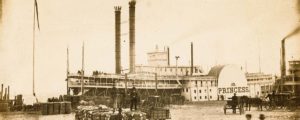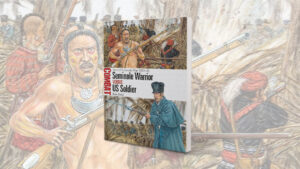
Alistair Urquhart, a 91-year-old veteran of the British Army’s Gordon Highlanders, spent three and a half years as a prisoner of the Japanese—one of 80,000 Brits who surrendered after the fall of Singapore. “Just when you thought it couldn’t get any worse,” he recalls, “it did.” Urquhart’s gripping book, The Forgotten Highlander, recently released in the United States, recounts how he survived slave labor on the notorious Death Railway in Thailand; blindness and paralysis; and the sinking of his “hell ship” prisoner transport, followed by five days alone at sea. His skills, grit, and self-discipline, with bits of luck, ultimately brought him a full and satisfying life. But he was denied an army pension, still needs painkillers, and suffers lingering metabolic damage as a result of his ordeal.
What was the key to your survival?
I learned early on to have the tenacity and mental attitude to do whatever I do to my best. All through my school days I was doing sports and swimming. I was a Boy Scout, then a King’s Scout. I loved dancing; I still do. Thanks to all that and my mother’s cooking, I was extremely fit—the fittest lad they’d seen when they called me up three weeks after war started.
What was Singapore like?
A lethargic backwater, not the fortress they made out. A sleepy place where they dawdled through everything. No sense of urgency. You went to your bunk for two hours in the middle of every day. I kept thinking: Would the enemy be doing that? It was ridiculous. The racism and snobbery were so bad the coolies and troops felt them almost equally. I had to clear off the sidewalk to let rubber planters pass by. That sort of Raj thinking is why we lost the Empire.
When did the brutality start?
Two days before they came to the army headquarters at Fort Canning, the Jap-anese massacred 300 people at Alexandra Hospital—doctors, nurses, even patients on the operating table. When we were marched to Changi prison camp, they deliberately had us pass a gruesome sight and stench: Chinese heads mounted on poles and decaying bodies. Marching with us a distance away was a column of Chinese, who were later massacred. At Changi, we were hungry and sick, and men began dying, but the Japanese usually left us alone. But I was only there for three months; I was among the first draft of 600 men to go to Thailand to build the Death Railway and bridges over the Kwai.
What changed there?
Everything. Changi had barracks. The British officers took charge—under Japanese control, of course. So there was some sort of discipline. But even then I could see this would be look after yourself ! In Thailand we had to build barracks. The Japanese were in charge; our officers were nothing. The Black Prince [Lt. Kishio Usuki, executed by the British in 1946], Doctor Death [Sgt. Seiichi Okada], a Korean guard called The Mad Mongrel [hanged by the British in 1946]—these bastards were the worst. We all watched Doctor Death behead one of us. He had me tortured and thrown in the black hole. He’d stand on cliffs above us as we worked and toss boulders and rocks down. He didn’t care who he hit.
Describe the conditions.
We had a half cup of boiled rice and a cup of water every day—for three and a half years. Can you imagine working in that tropical sun, hewing solid rock with pickaxes and shovels, on those rations? We wore Jap-happies—their kind of underwear—and nothing else. No hats. Bare feet. So we all soon were suffering from a host of diseases: malaria, dysentery, beriberi—that was a real killer. And depression.
What hit you worst?
The very hard work. Your body was not able to stand up to it. The mental attitude…in my case, that’s why I went on my own. I could psyche myself up each morning to face that day alone—not the next day, just that day. The next morning was the same. I was only thinking of myself and how I could avoid dying like those around me. When I first saw The Bridge on the River Kwai, I very nearly put my television through the wall. It was a travesty. Imagine: the film had us walking across the bridge, which wasn’t like that, all dressed up, pipes playing. Bloody hell! If you’d whistled while you worked, that would have been an excuse to put you in the black hole.
How did your transport sink?
Our convoy was attacked by an American wolf pack; the USS Pampanito sunk my hell ship. Of course, it was unmarked—no Red Cross or anything. I popped miraculously out of the jammed hold, through the open cargo hatch. I swam through water covered with oil, and swallowed some of it. Finally I spotted a life raft and managed to get on it. That was the worst time of all.
Why?
Can you imagine it? Floating in the South China Sea with not a thing in sight? While you’re covered in oil, and the sun’s blazing down on you by day, and it’s freezing cold at night? And you’re completely on your own, with no water, nothing? And if you fall asleep you’re done for?
What got you through?
My Boy Scout training. I knew I musn’t drink the water all around me though I was dying of thirst. I got as much of the oil off me as I could. I thought of the cold and bitter winters in Aberdeen, when I was growing up, and my head soon flooded with memories. That took a full day or two. Meantime, Japanese and American ships were picking up survivors. That’s how the world first learned the extent of the horrors we’d been through. But a Japanese ship found me.
Where did you end up?
At Omuta, the mining camps, a few miles from Nagasaki. I was a hospital orderly. My most hateful task was emptying the latrine cans onto the Japanese officers’ tomato plants. One morning, I saw a plane flying so low I could see its American markings. I wondered why it wasn’t being challenged. Two minutes later came a tremendous clap of thunder from Nagasaki. A gale-force wind nearly knocked me over. I paid it no attention; it lasted just seconds. But rumors flew at the camp. For months we’d sensed the Allies must be winning, and wondered what the Japanese would do with us when they did. Most of us figured they’d massacre us.
How did you learn about their surrender?
On August 15, prisoners came back from the factory and said the manager had made a big speech and broken down crying. Six days later, the Japanese camp commander read us the cessation of hostilities. Soon Americans came and took us to Nagasaki. Unbelievable. Of course, we didn’t know what had done it. Utter devastation. Shells of some concrete buildings. No trees, no growth. A desert of black ash. I kept wondering, “Where are the bomb craters?”
How did the sight make you feel?
I didn’t feel anything about it, because right at the quayside there were portable showers the Americans erected. We were each given a bar of soap. For three and a half years, I’d never had a wash. You weren’t thinking about anything else but that bar of soap, and a wash, and trying to get the bloody dirt and grime and lice and all those things you were suffering from out of your body. When the Americans said, “Come on, lad, you’ve got to hurry up,” I said, “No, no, you’ll have to wait for me.”




